

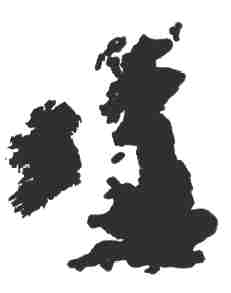 by AF4K
by AF4K
The following are more memories of the activities that some were privileged to enjoy as members of the COMBINED CADET FORCE (CCF) radio network, which was operated in the 5mhz range. I trust you will enjoy reading them!

Martin, G4NCE writes: Subject: CCF use of WS sets Richard Hankins wrote: Anyone remember any of WS1-11, WS21, WS29, WS33, WS42, WS43, WS68, WS78, A14, A16, C11SSB, C15, D11 or D13 being used? Richard G7RVI -------------------------------------- Richard, I can't answer for the CCF, but certainly on the ATC radio nets of a few years ago we had a squadron using a C11SSB/R210M with great success (SK4B77 near Bristol), a 53Tx from the Wirral (VQ5X58), a D11 (sqn near Cambridge...BIG signal!), and the RAF version of the C14 was used by numerous squadrons, mine included (VQ5X79). The C14 was a Redifon GR410, 4ch AM/USB/LSB/CW/MCW 100W PEP Tx/Rx of hybrid valve (6146) and transistor design, with an OC170 in the front-end. The SSB generation was by the third method, and GR410's were easily recognised on-air by a tone with the carrier, the suppression of which depended on the skill and patience of the person who had aligned the balanced mixers. I also recall the crystals were 40pF parallel capacity, not the standard 30pF, which I found out the hard way. There was a GR410T made as well, which could be re-tuned externally, rather than internally. Nice sounding transmitter, but an absolutely horrible receiver. There were also one or two C15's (Collins 618T) around, but I don't think one was ever fired up, probably due to the lack of cables, and the enormous current requirement at 28V, which I believe was around 60A. The D11 was still active in '96. What was the A16? 73, Martin, G4NCE Great Barr BIRMINGHAM England


Date: 30/1/98 To: Richard Hankins From: af4k@earthlink.net Thanks very much RIchard. That is great info. I am still looking for a picture (or even a description?) of a WS62. Do you remember anything about that set at all? Cheers - Bry, G3XLQ

Date: 30 Jan 1998 From: Richard Hankins = Richard.Hankins.3310463@nt.com Subject: Re: WS62

Bry, I remember quite a lot about this set. I used the WS62 quite a bit in the CCF in the odd occasion that a WS31 with elevated antenna couldn't be made to cover the range required. Switching from manpack VHF to a HF set was a pain, because there are always the hefty battery to cart about, and the bigger antennas, etc, etc. Anyway, you want some data on the WS62. Its a low power HF manpack - just about. Its about the same size as the WS19 set (i.e. less PSU), and the front panel is similar in style to the WS19. It has the same tuning dial, with settable click-stops, for instance. It runs off 12V DC directly connected to the set, and the PSU is built in, being a miniature rotary convertor to produce the HT. The set produces a miniscule 800 milliwatts of RF from a QV04-7 PA valve, though friends tell me you can several watts with some simple mods. The frequency range is 1.6 to 10 MHz in two ranges, and you can use VFO or Xtal. It works on AM or CW. It was intended as a man portable set, vehicle set, ground station and even "animal mobile". My handbook shows pictures of the set strapped to the side of a donkey! Actually, when I say man-portable, more accurately this should be "men-portable", as it requires 3 guys to hump (a) the set, (b) the batteries, and (c) the aerials and all the spare widgets. In the widget category are handy things like a Xtal calibrator and a remote control unit so the enemy can bomb the wireless and not you. I have been trying to scan an image of the front panel controls for you, but at present I cannot get my rather limited PC to cope. If I succeed I will forward it to you. What else would you like to know? Richard G7RVI

Date: 30/1/98 6:30 pm To: Richard Hankins From: martin.swift@virgin.net What was the A16? 73, Martin G4NCE
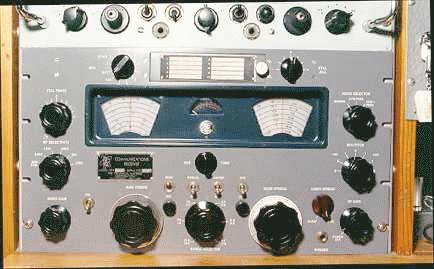

From: Richard Hankins = Richard.Hankins.3310463@nt.com Subject: Re: CCF use of WS sets Martin, thanks for the info on sets in the ATC. Have seen one CCF in Scotland also using the GR479, and Clansman gear. The A16 is another designation for the UK/PRC316. Its a rather small (for its time - late 60s) transistorised, man-portable set, covering 2 -7 MHz with 45 crystal derived channels. It has both CW and AM facilities, though its meant primarily for CW use, with a built-in key on the front panel. Strangely it also has the morse alphabet marked on it, as though it were intended for casual use by the semi-skilled. It has 4W RF output from a 12V alkaline battery, or external DC source. It feeds into a dipole antenna, the same one the A13 uses. Its size is the most startling thing about it (after looking at the usual great manpack beasts) - from memory its about 9" long, 3" wide and 3" deep. You do see quite a few of them about. The guy in Wolverhampton was selling them for a long time at 100ukp each. Have heard them occasionally on 80m MWARS net - as expected the low power makes it a bit desperate! Richard G7RVI

On 29 Jan 98 at 0:04, Richard wrote: ] Ian, ] thanks for the comments - from your description below, I suspect what you were using was actually a ] WS12, rather than the WS42 - the former has this kind of tuning up arrangement and was frequently... ] It is exactly the contrast between the complexities of say WS12/R107, or even WS19 and WS62, and the ] clever simplicity of the WS42 that make the latter such an interesting set. What does seem odd ] Perhaps it was the old story that the end-user requirements never actually reached the design team, ] because there were too many middle men in the way, who didn't understand the problem or the enginee ] Richard ] G7RVI -------------------------------------- Date: 28/1/98 7:58 pm To: Richard Hankins From: Ian Keyser HI Brian, When I read your note about the 42 set it reminded me or operating the CCF net and I am sure that was the 42 set... It was a partner to the R107 (big thing with a crescent dial and two speed tuning) and about the same size. I think it was VFO controlled as well as crystal, but we used it on crystal only. You then tuned the driver/doublers and then the PA. Had lamps to indicate that circuits were tuned. Sorry cannot give any more information, but that was 40 plus years ago!! 73/72 Ian, G3ROO
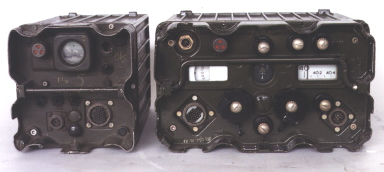

From: Brian Carling, G3XLQ = af4k@earthlink.net Date: Thu, 29 Jan 1998 Gadzooks, HOW could they think ANYTHING was heavy after lifting an R-107 and THAT was only a receiver!

Date: 28/1/98 7:58 pm To: Richard Hankins From: Ian Keyser HI Brian, When I read your note about the 42 set it reminded me or operating the = CCF net and I am sure that was the 42 set... It was a partner to the R107 (big thing with a crescent dial and two speed tuning) and about the same size. I think it was VFO controlled as well as crystal, but we used it on = crystal only. You then tuned the driver/doublers and then the PA. Had lamps = to indicate that circuits were tuned. Sorry cannot give any more information, but that was 40 plus years ago!! 73/72 Ian, G3ROO

Date: 29 Jan 1998 00:04:45 +0000 From: Richard Hankins = Richard.Hankins.3310463@nt.com Subject: Re: WftW Vol.2 &WS42 Ian, thanks for the comments - from your description below, I suspect what you were using was actually a WS12, rather than the WS42 - the former has this kind of tuning up arrangement and was frequently used with the R107. It is also known to have been issued to the ACF/CCF. The WS42 is a full transceiver - i.e. it has a built in Rx - so has no need for the R107. In addition, it has exceptionally simple tuning procedures, and does not have separate tuning of the Tx driver stages. (Incidentally, if you look on Bry's webpages you will see a WS12 - page 6 I think - that may bring some memories for you!) It is exactly the contrast between the complexities of say WS12/R107, or even WS19 and WS62, and the clever simplicity of the WS42 that make the latter such an interesting set. What does seem odd is that so much "before its time" design should have gone into the set, and yet the design team stumbled over such a simple thing as its weight - the report we have says the Army rejected the WS42 following trials in the Far East, not because it didn't work, but because it was too heavy! Perhaps it was the old story that the end-user requirements never actually reached the design team, because there were too many middle men in the way, who didn't understand the problem or the engineering. Unfortunately, this is a situation still being repeated today in the electronics industry! Richard G7RVI

Date: 28/1/98 10:32 am
To: Richard Hankins
From: tudor.gwilliam-rees@virgin.net
Hello chaps - can any of our older members cast a light on the Radio
Security Section of the War Office. Appeared to be a band of short wave
listeners or radio amateurs listening in & recording suspicious
transmissions - have lots of logs of this by a Mr. Osborne in Bristol,
c/o HM signal School at the Royal Fort (worked there for 10 years in the
1960's).
Logs go through the entire War - plus bits & pieces - can send
image (1087K!!) to those interested,
Tudor Gwilliam-Rees

Date: 28 Jan 1998 From: Richard Hankins = Richard.Hankins.3310463@nt.com Subject: Re: Radio Security Section W Reply to: RE - Radio Security Section WWII Tudor, there was a comprehensive article on the RSS - and amateur involvement in it - in Radcom Nov.96 issue, entitled "Secret Listeners: VIs in WWII". Some 3 pages plus interesting pix written by Bob King G3ASE. Far too much info to even summarise here, but can mail you a copy if you are interested and haven't seen it. Would like a copy of the image please - sounds interesting. Richard G7RVI

Date: 28/1/98 To: Richard Hankins From: af4k@earthlink.net Does anyone know if 42 sets were ever used on the CCF radio nets? Bry

Date: 28 Jan 1998 From: Richard Hankins = Richard.Hankins.3310463@nt.com Subject: Re: WftW Vol.2 &WS42 Bry, Andy G8JAC did tell me that a colleague of his bought his WS42, when at the Croydon ACF in the mid 70s, from Colomor. He added that they did not have the matching PSU, so I presume it has never been fired up in anger. This would fit the usual practice of the Army issuing the "standard" sets - WS19, WS62, WS31, etc - and adventurous cadet forces going out and buying some interesting supplements! My unit, for instance, added the rather formidable WS52 to the more mundane stuff. Andy also said that a routine check of radiation levels on their sets showed this WS42 to be pretty "live" - and Louis Meulstee in his letter to me said that he donated his example to the Blandford Signals Museum, and was glad to be ri d of it, because of the high radiation levels. Sets I personally know that were on the CCF net include WS12, WS19LP/HP, WS22, WS52, WS53, WS62, C11, C12, C13, A13 (to leave aside homebrem, commercial and more recent military stuff). Anyone remember any of WS1-11, WS21, WS29, WS33, WS42, WS43, WS68, WS78, A14, A16, C11SSB, C15, D11 or D13 being used? Richard G7RVI


Date: Tue, 27 Jan 1998 To: G3TUX = G3TUX@aol.com Cc: rwalsh@homenet.ie, uk-vintage-radio@webaware.co.uk From: Robin Birch = robin@falstaf.demon.co.uk Subject: Re: Rx type 88 G3TUX = G3TUX@aol.com writes: Something at the back of the ancient grey matter says that the Rx type 88 is either the same/very similar to the R1475 RAF Rx - for which info should be readily available. 73, Chris G3TUX It is, I have recently obtained the manual for one which I am rebuilding so if there is someone out there doing the same thing then I would be interested in hearing from them. Regards Robin Birch robin@falstaf.demon.co.uk M1ASU Old computers and radios always welcome

Date: 27 Jan 1998 From: Richard Hankins = Richard.Hankins.3310463@nt.com Subject: WftW Vol.2 &WS42 Folks, you may recall the previous discussions on WWII sets and the move to use of FM on HF and VHF. This touched on the subject of the WS42, and in particular, given the apparent rarity of this set, why Louis Meulstee decided to put the WS42 into Vol.2 of his tome 'Wireless for the Warrior' - apparently supposed to cover the so-called standard sets of WWII - such as WS19, WS62 etc. I wrote to Louis M. putting forward some pretty conclusive evidence, supplied by Andy G8JAC, that the WS42 never saw active service and was abandoned following trials - the problem being the excessive weight of the various boxes. Louis' reply was that he was lacking in data on some sets - WS42 included - and thus these were put off until Vol.2. So WS42 certainly was not a "standard set" in any sense. Readers of WftW Vol.1 may interested to know that Vol.2 is planned for introduction at the London Amateur Radio Show in early March - presumably Geoff Arnold will be flogging them there personally. Judging from the excerpts Louis sent me, Vol.2 will be even more comprehensive than Vol.1 - it includes an appendix Bedford QLR for instance. Louis says he is always pleased to receive comments and queries, so I will forward his snail mail address (on request) to anyone on the list who wants to make contact with him. Richard G7RVI

Date: Mon, 26 Jan 1998 From: Rod Walsh, EI7DF = rwalsh@homenet.ie Subject: Rx type 88 Hi Folks My good friend Paddy ei6cp, who recently supplied the Fleet Air Arm Museum in Yeovelton with a much sought after R1116A Rx that he discovered at a car boot sale outside Dublin, has come up with another little gem. Paddy writes "Rx type 88 2.0 - 20 mcs in 4 switched bands. 14 valves including a Tuning Eye in the centre of front panel. Provision for a Guard Channel. Seperate power supply. 12v DC input / 260v AC input inside handpainted are the words "The ADEN Amateur Radio Club" and part of a call 5A??. Paddy would very much like a circuit diagram for this Rx and if anyone can help I will pass it on. Thanks es 73 de Rod ei7df

To: Rod Walsh From: G3TUX = G3TUX@aol.com Date: Tue, 27 Jan 1998 To: rwalsh@homenet.ie Subject: Re: Rx type 88 Something at the back of the ancient grey matter says that the Rx type 88 is either the same/very similar to the R1475 RAF Rx - for which info should be readily available. 73, Chris G3TUX
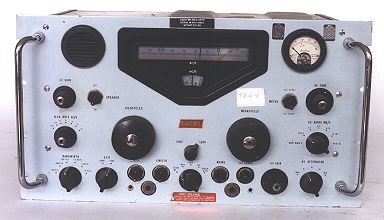

Brian The CCF radio was at the Leyes School because if you remember our own school didn't have a radio section. I was in the Air Force section of the CCF and was very keen to encourage interest in radio. We had an old HRO receiver in the air force hut which I think must have been donated to the school. I seem to remember there was an old Command set receiver as well and lots of junk. We put up a long wire ant from the science block to the Air Force hut one CCF open day to demonstrate communications equipt. Anyway as our school couldn't get a CCF radio authority Geoff Hyde ( do you remember him- French teacher, now sadly dead) arranged for me to go to the Leyes School to use their equipt. Do you remember that the radio room was at the end of a long labyrinth of corridors actually underneath the Headmasters House. You may also remember him and his wife coming down to complain of TVI. ( Mrs Baker- she eventually became Mayor of Cambridge!!). The ant was made of D10 field tel wire and ran from the room of the school swimming pool to the chimney above the Headmasters house!! Call sign of the CCF Tx at Leyes was 19B or F19B when we were operating remote. The equip was as described and it all ran from large wet batteries charged from AC mains. There was also a 19 set amplifier which I seem to remember gave about 40w output. Also the mic etc on the 19 set was actually a headset with a separate mic with a large rubber cover on it and a ptt button on the side. Its always smelled very strongly of rubber! I think as well that Fred G3RFP gave or loaded us another ex army tx to use there. I always envied the groups who had the D11 which was the high power, like 500w, Tx made by Marconi. There were 2 Leyes pupils who also used to operate with us but were never so keen. I don't think they ever went on to become amateurs. Don't remember names but one was from Gatehouse of Fleet in Scotland his father was doctor if I remember-and the other from Sheffield area. There was also Geoff Cottrell who became G3XGC, used to live in Madingley Rd Cambridge. I did hear from him some years later and understand he is now a Prof at Oxford. He and I went to Humber Radio together to take our Morse Test. His friend an neighbour was Adrian Nichol G8BXA who, lived next door and whose father was also at Cambs Univ. Think he let his licence lapse a long time ago. We did several 2m expeditions together to GW etc. Do you also remember my old friend Mike Kitchen who used to operate from Uppingham school- think call sign was 69B. I kep in touch with him for several years but then lost touch. Another we used to talk to was Mike Kinnersley- Taylor who came from Aberdenn or similar- he eventually became GM3WTA. There was also another well known amateur G3S??? who was at school in Dorset- he used to be on the net all the time. Do you remember that the " boss" i.e. organiser of this all was G5VO who was a schoolteacher in Whitby or similar. I did once meet him at one of the rallies. Do you also remember going there by bike on hot Saturday evenings. I used to go into Cambridge on the bus and then go to the school by bike- cannot remember now who I used to borrow it from!! (Note: - he probably NICKED One! - AF4K, (just kiddin'!)) After CCF days my radio activity moved to Cambs Tech. Do you remember me operating from there with an old G2DAF Tx ( ex Doug Free G3NBP?) and an AR88 ( ex Peter Simpson G3GGK.) We had a vertical ant on the top of the Science block which was eventually replaced by a Labgear Cubical Quad with bamboo elements. Were you involved in the DX contest we did from there- Chris Pedder G3VBL was one of the operators. He was maths student at Cambs Univ- used to always have a bow tie. Last I heard of him he was a teacher at a school in Blanford area. David Wilcock G2FKS used to be the main stay at the Tech- he was teacher there. I kept in touch by Christmas card- he moved to Cotteham. Heard from his wife that he died in 96 whilst on a cruise! Writing all this has started to bring back even more memories. Of us at school and later at Cambs Radio Club. Will write some more about the club later if you are interested. (YES PLEASE!! - Bry)

From: Brian Carling = af4k@earthlink.net To: midtown@the-wire.com (Ian Gallimore) Date: Tue, 13 Jan 1998 Greetings Ian, and thanks for signing the Guest Book when you visited my web site at: http://home.earthlink.net/~af4k/ You ( midtown@the-wire.com (Ian Gallimore) wrote: ==== Fascinated to read about your adventures with tubes in the 60's. I happily recall many afternoons spent at my school here in Toronto playing with our Cadet Batallion's 19 sets, transmitting nonsensical messages and practicing voice procedure in 1962 or 1963. I keep thinking about trying to pick up an old 19 set for auld lang syne, also because my late father became a POW in Normandy partly because of the failure of his Tank's "B" set. Have fun So long for now. Ian Gallimore.

From: Bob Haffer, KA3JAV = BKHAFFER@aol.com
Date: Sun, 4 Jan 1998
To: af4k@earthlink.net
Subject: #19 rig
Hello Bry,
As I was reading your page, I came saw the picture of that Signal Corps
Wireless Set #19 MKII. 2-8 Mhz. transciever.
I couldn't believe my eyes, I have one of those radios in my posession, along
with other military radios.
It even works, from what I know about it, they were used in medium size
British tanks (MK4),
I have nearly everything that went with it, the cables ,ant tuner, control
boxes, even the drawings of how it was mounted in the tank, the parts list,
but I don't have the antenna.
After I recieved the radio, which was over ten years ago, I wrote to the
National Archives in Washington, D.C. to find out more about it, they replied
that they had no info on it. I couldn't find any listed in the catalogs of
military surplus radio suppliers that I delt with.
Thanks for putting that picture on your page, I was beginning to believe I
would never see another one like it.
Sincerely, Bob Schaffer
KA3JAV
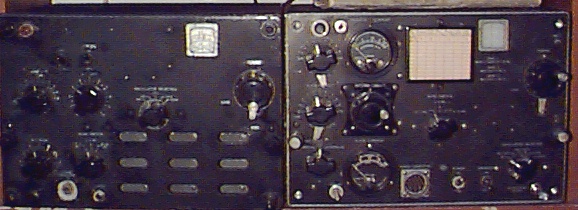

Date: Fri, 14 Nov 1997 From: Martin Swift = martin.swift@virgin.net Subject: GIF of 12 sender etc Bry, Did you receive the GIFs OK? I had a litle trouble with another call starting on the same phone line this end and wasn't sure whether they may have been corrupted. Please let me know...I'll re-send them if necc. Oh..and please feel free to use my name and email address with the pics if you wish. Regards, Martin

From: Martin Smyth = Mjsmyth01@aol.com Date: Thu, 13 Nov 1997 Subject: CCF NET I can't believe reading this site. It's my past. I was at Boston Grammar CCF in 1976 to 1978. I went on National Net as it was called. Our callsign was ONE. Yes we operated on the primary frequency of 5.330 with NIS changes regularly. We went on Nat Net with 62 sets, a c11 and my 12 set rigged up to an R107. We of course also had the 88 sets and 31 sets. This was the start of my radio career. I then went into The Royal Corps of Signals as a Radio Technician Apprentice. I was the last course at Harogate Apprentice college to learn valve theory and the C42. I went on up the ranks, working on Clansman + other extra special sneaky beaky stuff. I came out in 89 and now work for Ericsson. Many thanks to the CCF and those great valve radios for the start of my radio career. Maybe I even talked to some of you guys before. I now have a hobby of restoring these great old goldies, but searching the net, looks like many people are more serious than me. regards Martin Smyth

Date: Thu, 13 Nov 1997 From: Richard Milewski = cathlab@worldnet.att.net Subject: UK radio pics I have a few jpgs of a R 1147A aircraft receiver from WW2, Vid caps made with a " SNAPPY ". If you want them let me know . Rich M.

Date: Wed, 12 Nov 1997 From: Secret Op #2 Subject: Re: ACF/CCF National Nets Dear Bry, Re: ...the first SSB contact on the Nets (mine!) ...and I've even got (a) QSL card for it! It was perhaps as rare as AM is today, but that (quite illegal!) SSB contact on the National Net was just over 32 years ago! Everyone on the Net said that I was "unworkable", "very badly distorted" and "very bad signals"!!! Only "BLANK" and I knew! Ah well, times change. Best wishes Secret Op #2Note: Visit the G3LYW Network here!

More wonderful commentaries & photos coming soon!!
Please send YOURS in as soon as possible!








